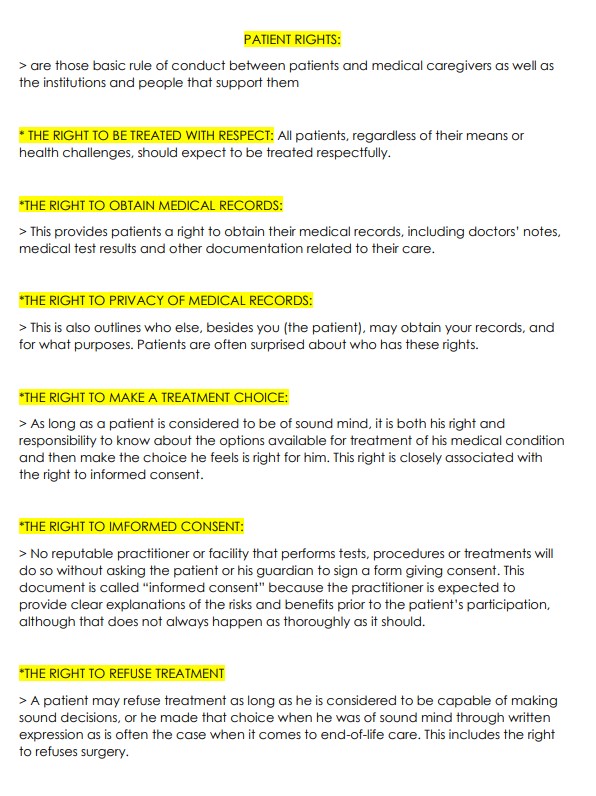Your Patient Rights
Summary:
This passage discusses various patient rights, including the right to be treated with respect, obtain medical records, the privacy of medical records, make treatment choices, informed consent, refuse treatment, and make decisions about end-of-life care. It also includes a patient’s bill of rights that guarantees fair treatment and autonomy over medical decisions. Informed consent is explained as the right of patients to freely and voluntarily consent or refuse recommended procedures based on sufficient knowledge of the benefits, burdens, and risks involved.
Excerpt:
Your Patient Rights are those basic rules of conduct between patients and medical caregivers, as well as
the institutions and people that support them:
- THE RIGHT TO BE TREATED WITH RESPECT: All patients should expect to be treated respectfully regardless of their means or health challenges.
- THE RIGHT TO OBTAIN MEDICAL RECORDS:
- This provides patients with a right to obtain their medical records, including doctor’s notes, medical test results and other documentation related to their care.
- THE RIGHT TO PRIVACY OF MEDICAL RECORDS:
- This also outlines who else, besides you (the patient), may obtain your records and
for what purposes. Patients are often surprised about who has these rights.
- This also outlines who else, besides you (the patient), may obtain your records and
- THE RIGHT TO MAKE A TREATMENT CHOICE:
- As long as a patient is considered to be of sound mind, it is both his right and responsibility to know about the options available for treating his medical condition and then make the choice he feels is right for him. This right has closely associated with the right to informed consent.
- THE RIGHT TO INFORMED CONSENT:
- No reputable practitioner or facility that performs tests, procedures or treatments will do so without asking the patient or his guardian to sign a form giving consent. This document is called “informed consent” because the practitioner must clearly explain the risks and benefits before the patient’s participation. However, that does not always happen as thoroughly as it should.


Reviews